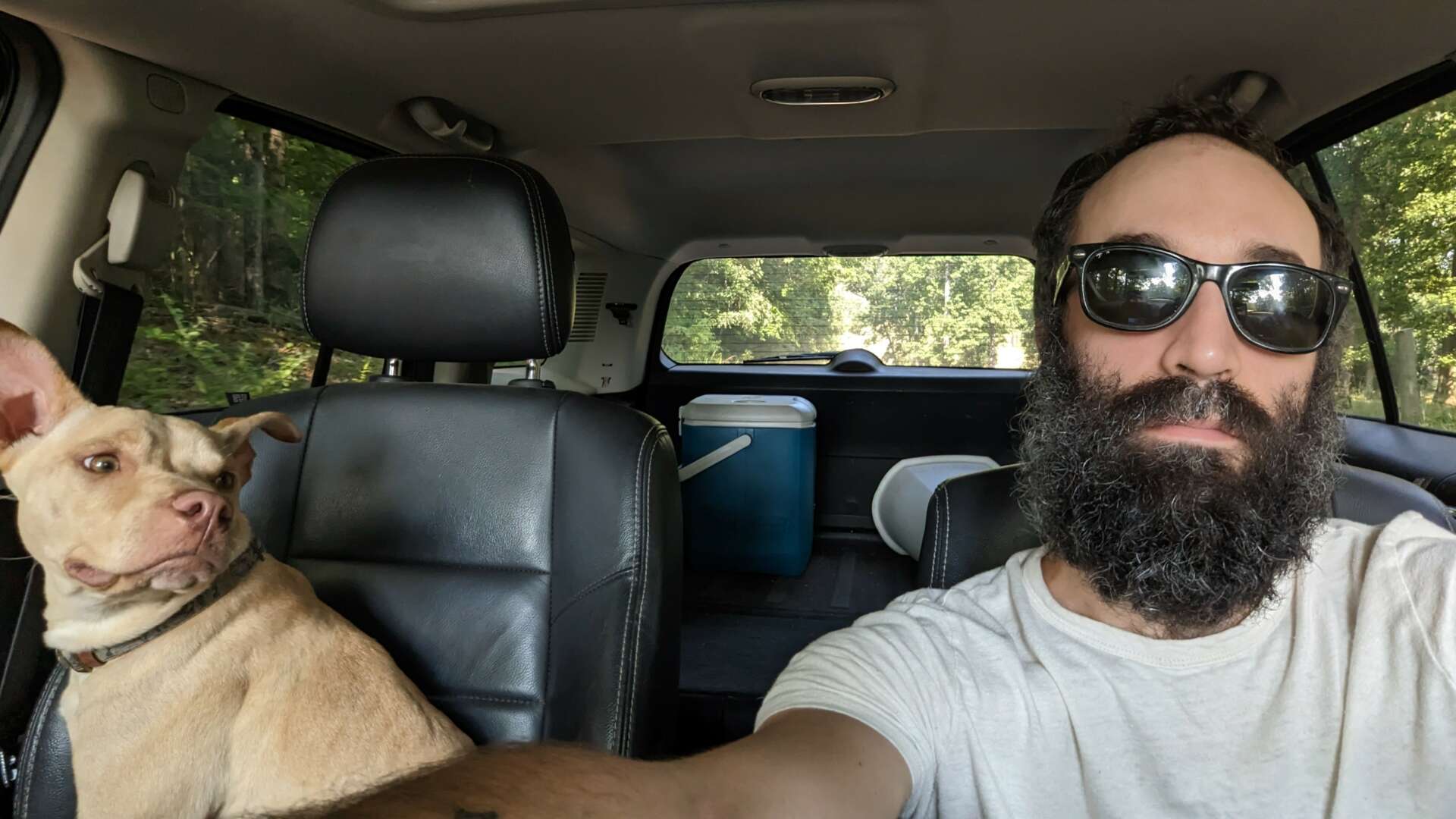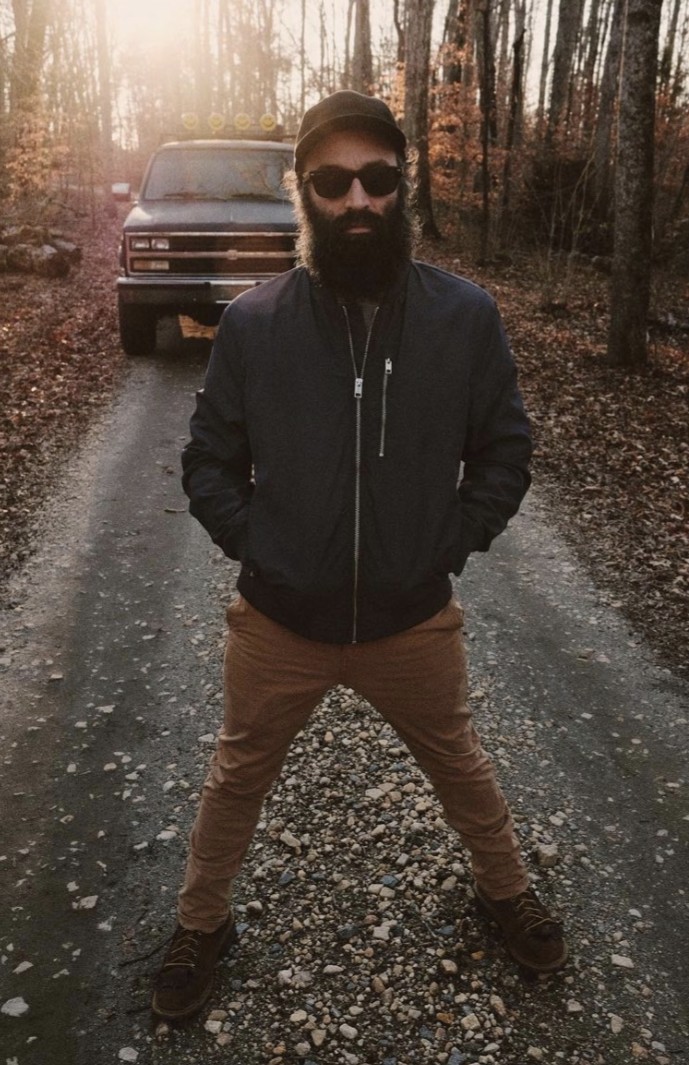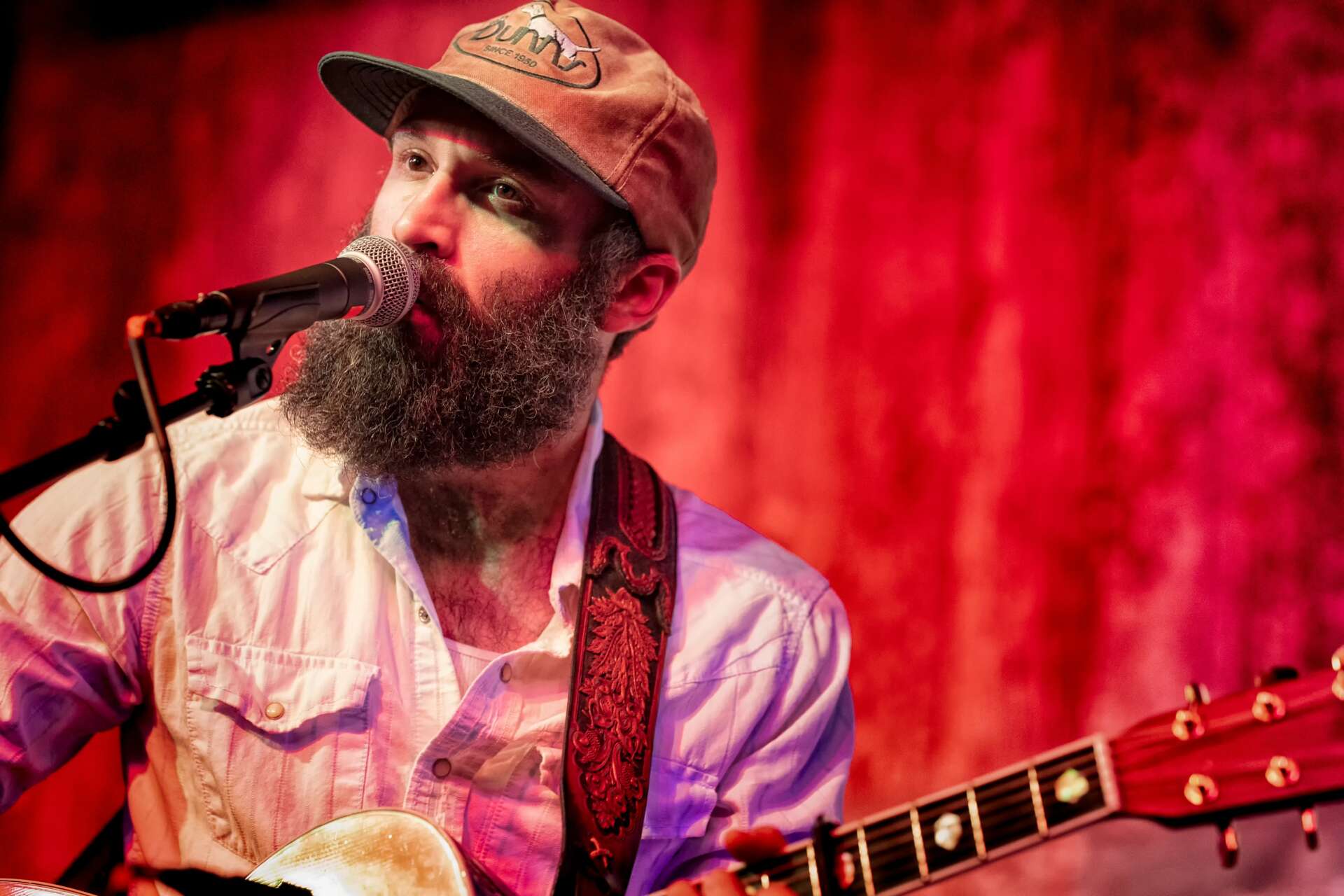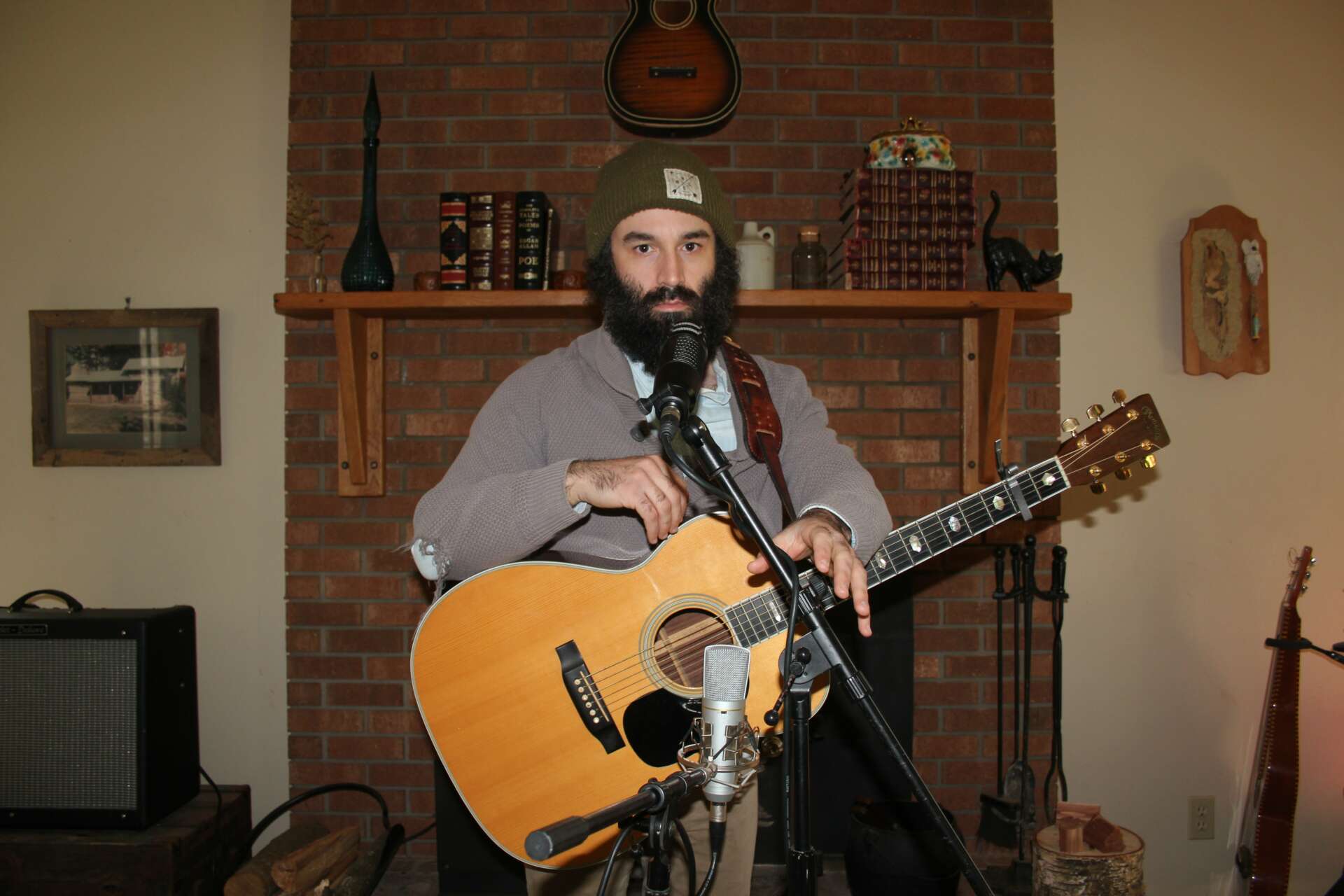We caught up with the brilliant and insightful Tyler Nail a few weeks ago and have shared our conversation below.
Alright, Tyler thanks for taking the time to share your stories and insights with us today. One of the toughest things about progressing in your creative career is that there are almost always unexpected problems that come up – problems that you often can’t read about in advance, can’t prepare for, etc. Have you had such and experience and if so, can you tell us the story of one of those unexpected problems you’ve encountered?
I think many music artists feel lost in the modern world, caught between making art and making content, which are motivated but completely different things.
I entered the music industry around 2009. The industry was still old-fashioned. Print magazines were more significant than social media, podcasts hardly existed, and YouTube was something I thought I might learn how to use someday down the road. The suggested roadmap for becoming a successful musician was very different than it is now.
New services were budding everywhere. Prior to 2012, when I wanted to sell CDs I would go to Walmart and buy 100 blank CDs and a new silver Sharpie. I would order some cardboard CD cases and spend hours burning CDs and drawing artwork on them the night before a show. But services like DiscMakers and CD Baby were starting to make it possible for artists to sidestep the industry gatekeepers and go right for the big prize – having a professionally printed CD, national distribution, or even pitching for TV placement. Websites like Indie on the Move and Reverb Nation were attempting to make booking agents less necessary. We believed that the playing field was being leveled in the name of merit.
We didn’t realize at the time that all of these subtle changes would have major impacts on the industry as a system. I think as young artists we were just excited that it felt like we were able to do what our music heroes had done and we didn’t need to move to LA or NYC to do it. We could just use this new internet tool and no one would know the difference – and maybe there was no difference.
I took some time away from the full-time grind a few years back. Upon re-entering the music industry, I now see some of the major costs of the changes that the internet has made that came along with the benefits.
The phrase “over-saturation” is almost cliche to use at this point, but without a barrier to entry into the arts, over-saturation is the inevitable outcome. The internet is now dominated by social media, which are basically spaces that exist to entertain us and capture our attention. But unlike the radio, TV, or the silver screen, each person holding their phone has equal power to contribute a creation to the same space through which they consume creations. No producer, investor, or director needed. Disregarding differences in audience size, everyone is theoretically equally equipped for a career as a creator as long as they have a smartphone. And if everyone is a creator of ‘content,’ I wonder if eventually there will be no demand for professional artists. This is unlikely because I think popular art will continue to be distinct from unpopular art. But the social, financial, and even artistic reward is vastly different in a landscape in which the lowest forms of innovation and creativity are on a theoretical equal playing field to deeper, harder-to-achieve depths of creativity.
What makes a work of art or an artist popular has changed as well. I believe the music industry is still largely relationship-dependent. I would argue that due to social media, the valuable relationship for an unestablished artist to foster is with his audience rather than industry insiders. This might seem obvious or unsurprising, but I think it’s a bigger change than it seems. At least some portion of consumers enjoy the direct connection to the success of the creator as if they are responsible for the artist’s career. It is actually a monumental difference that music lovers can now be guided to a musician they will love through independent means, rather than a focused campaign from a multi-million dollar corporation.
This change possesses many advantages, but I have noticed that artists on YouTube and social media platforms are far more beholden to approval by their fanbase than artists of the past. Perhaps this was always true to a lesser degree by way of the dollars spent on albums or movie tickets. But previously in the music industry, a label would prefer to take on the risk of multiple recording projects by a single artist, and would then be incentivized to make each album release a success. Artists arguably had more distance from their fans, giving them more personal room to create what they were led to, unable to predict in real-time whether fans would enjoy it. Approval of the work from fans might not be the deciding factor as for whether it was a worthy financial investment for a label. Labels had a more top-down relationship with consumers. The entrepreneurial side of me understands the great advantage it is to be able to use social media to engineer music that fans will undoubtedly enjoy. But my rebellious artistic side prefers the risky business of doing what I am personally led to do, whether people will like it or not.
The final (and biggest) unexpected change is the switch from single projects to constant output. We are told now that artists should be engaging their audience every day through every form of social media, basically manipulating their following into generating circulation of their content, and thus making their reach valuable and increasing the popularity of their music, which is sometimes secretly embedded in their content. In my opinion, making art is not the same as making content. Content is intended for circulation and likability. Art is not confined to these measurements for success. I require long and deep meditation to create works of art. It takes time, effort, patience, and focus. Posting an updated photo on Instagram is quick, impulsive, and almost thoughtless. So I feel that I am now viewed as someone who is beholden to the rules and expectations of what is considered social media success, or success for content creation. But I’m more interested in art creation than content.


Tyler, love having you share your insights with us. Before we ask you more questions, maybe you can take a moment to introduce yourself to our readers who might have missed our earlier conversations?
My name is Tyler Nail. I’m from Winston-Salem. North Carolina, where I still live. Winston-Salem is a small city just south of some of the most beautiful mountainous landscapes and hillsides in the state. Winston-Salem is called “The City of Arts and Innovation.” It is known for being home to Camel Cigarettes, the original Krispy Kreme, and the first ever Arts Council in the United States.
I was raised in a little log cabin that my grandfather built. He was a very old-school farm kid who moved to Winston-Salem to start a life. I lived next door to him. He lived just outside of the city, but as a kid I thought we lived in the country. My grandfather had a massive garden that he tended on his own. He rode around on a red tractor. We had a little barn that I heard used to house a pony and a goat. My grandfather brought his country upbringing into the city with him, which was the best of both worlds as far as I could tell.
I grew up around music. My father played drums in the church that I grew up attending. I seemed to inherit the percussion gene from him. Drums were my first instruments. I never took a lesson. My dad got me a set of drums when I was about 12 and as soon as I crossed my arms, I just knew how to play the drums. And drums were my only real instrument until I was 16, which was when I got my first guitar. I had showed some promise on guitar already, interacting with other folk’s guitars. When I finally got my own, it clicked instantly and I began playing guitar every day and writing songs to boot. It took many years, shows, basement recording sessions, open mics, and late nights, but eventually I started to gain confidence as a songwriter, to the point that I wanted to pursue music full-time.
I was working at a discount store when I was 19. I had done a semester of school studying music business. I took a look at my life and felt that my college courses had no chance of helping me actually make progress as an artist. And clocking into my job at the discount store was starting to eat away at my soul. So in very colorful fashion, I quit my job and decided that I was going to pursue music.
I’m 33 now. I guess it’s been 14 years since I made that decision. In that time I’ve won many contests and some awards, I’ve gained more experience in the industry, I’ve shared shows with renowned bands and musicians, and I have indeed pursued music. And I still pursue music.
What matters most to me is lyrics – words and story. My music is very lyrical, often very pretty, and deeply emotional. I play a 2-finger picking style that is derivative of African styles of playing, so I’ve been told. I’m a very active guitarist, even while singing very lyric-focused songs. My lyrics come from all sorts of places. I write about landscapes I see, people I interact with, things I imagine will exist in the future, idealized versions of the past, among other things. My songs are my best attempt at capturing the world as I see it and understand it, and making a lasting representation of my perspective. The representation might be like a celebration, a condemnation, or a curiosity. It all just depends on the moment I’m living in.
I’ve recorded most of my released material at my home studio, The Red House. I live on what used to be a little farm tucked away in the outskirts of town. I’ve lived here for 10 years and have written and recorded many songs in that time. The Red House has been a place where I’ve been fortunate to host many parties, music interactions, rehearsals, and hangouts. So when I started my podcast in 2021, I called it Red House with Tyler Nail. I have long natural conversations with creatives of all kinds – writers, musicians, chefs, entrepreneurs, gardeners. Usually an episode of Red House with Tyler Nail comes out weekly, aside from some instances when I branch off and produce a different type of episode. For example, often when I’m on the road for shows I will record audio of me talking to myself as a sort of travel log or audio journal. These episodes are called Red House Roadshow.
I started this podcast for a few reasons. One problem it solved was that I didn’t want to weaken the value of my music presentation by posting samples of me playing guitar or singing samples of songs every day. I feel that the culture of Instagram and TikTok are making music performance seem more mundane and boring for many reasons, one of which being the “everyday” mentality of promoting one’s self through these apps.
I also started the podcast because there is not much valuable media coverage of the arts in my town. Local radio and news outlets aren’t budgeting for art, so I felt it was an appropriate time for artists to start unifying with each other around the promotion of the arts community.
A current summary of me as an artist is that I’m quite proud of the songs I write. I honestly don’t always know how to promote everything I do. I don’t always feel like I know, love, or trust the place we’re in with social media. but I love art, I love writing, and I love sharing what I do with the world. At a glance, I appear to not have much traction. I’m not boasting millions of Spotify listeners per month. But I’m at an exciting turning point in my music career. I have new material and new musicians who play with me and after a long time away, I’m finally getting out on the road again. I’m sharing what I do again. I am learning again. And I feel like I am myself again.


How about pivoting – can you share the story of a time you’ve had to pivot?
When I started working as a musician in downtown Winston-Salem, I pretty quickly formed a band that would become my full-time touring band. We were playing at a pizza place in Floyd, Virginia one night. We noticed that the promo posters said “Tyler Nail Trio” on them, which I then decided would be the name of this band. Thus, I stopped booking myself as Tyler Nail and started booking my band as The Tyler Nail Trio.
We had a good system worked out. All of us were committed to touring and the members of the trio made touring more possible. One of the members had a more demanding but more rewarding job. Frankly, he would invest a lot of the upfront operational costs, which he would make back from our earnings over a weekend of shows, after which we’d all get paid. It probably wasn’t an ideal system but at the time our lifestyle was so intertwined that we felt secure about it.
We spent a few years on the road together. Those were some of the most enjoyable, special days of my life so far. But one day the guitarist told me that he needed to step away to pursue some of his life goals. Soon after, the bassist told me he needed to step away to focus on himself for a time. All of a sudden in the blink of an eye, the brand I had been building (The Tyler Nail Trio) was gone.
The biggest lesson from this was that I had built my operation and my brand around impermanent pieces, which wasn’t wise. I shouldn’t have let my vision for the future be dependent on what were only present circumstances. So now I have remedied that way of thinking. But of course, this sudden change demanded that I pivot.
I had two options. I could either load the car and take to a life of living on the road, looking for the way back to music out there – maybe move to Nashville or something. Or I could stay here where the rent is cheaper, I could work on a new band and still look for music from here, but with more security. I had a house I loved and my family nearby, so I chose to stay here. And I often wonder what would have happened had I chosen the more difficult option.
I got a job at a local art house cinema. In a short amount of time, I ended up becoming the manager of the place. I didn’t know it at the time but I had put myself in a position to learn what I didn’t yet have. In art, I had always explored creativity and unpredictability. This job allowed me to explore reliability, predictability, and organization. It rounded me out. It gave me a sense of that balance that I love so much.
However, not being creative did nearly destroy me. It drove me very deep into the bottle, it led to erratic and dangerous behaviors and clinical depression. I learned valuable things about myself in that time. I learned I was capable of more than I thought, in many different ways. I learned that I could be more than creative. I could be productive and assertive. But I also learned that creativity is not something that I can just put away and expect to be okay.
There’s a silver lining and an opportunity to learn in everything.


Are there any books, videos or other content that you feel have meaningfully impacted your thinking?
I read The Prophet (Kahlil Gibran) in my early twenties and it caused a significant shift in my thinking. I believe this was my first exposure to Eastern philosophy, which promoted a vision of balance and wholeness rather than a uni-directional good opposing a uni-directional bad. This understanding of balance immediately found a home in my art and life. In nearly everything I do, balance is the underlying goal that orients my choices.
I remember a conversation that had a profound impact on me that also took place in my early twenties. I would call the outcome of this conversation “The Vision Rule”. There was a man I would often see at my local coffee shop. I typically had a guitar with me, which acted as a good icebreaker for conversations with strangers. So this man and I took to talking regularly. I later learned that this man was a very knowledgeable and successful millionaire, which made his advice seem even more interesting after the fact.
He asked me, “Say you have 100% of your time and effort. What percentage of your time or effort would you dedicate to each of these three categories?” The categories were vision, strategy, and execution. I believe I probably shared the percentages fairly evenly, maybe giving a slight majority to execution. The man then went on to explain to me that the companies that make the biggest impact are focused on vision most of all. He said that a whopping 50% of my time and effort should be spent on developing my vision. He suggested that 30% be dedicated to my strategies, leaving only 20% for execution. This made perfect sense to me. He added that going from the vision stage to the strategy stage requires leadership, while going from the strategy stage to the execution stage requires management. This model is pretty much how I have operated as a creative entrepreneur. Vision is the most important thing to me. I spend some time strategizing, and I try to let execution take as little of my time as I can.
Lastly, at some point in life through writings and speeches on truth, perspective, and philosophy, I developed a deep love for the risk of being truthful. In business, in art, and in most of life, I find it more rewarding to choose the risk and discomfort of telling the truth as I see it, best I can muster, rather than the comfortable road of avoiding honesty. In other words, whether you’re dealing with your boss, a collaborator, or a friend, I think it is best to tell them how you really feel or what you really know, rather than avoiding the potential discomfort that comes with that. I believe what lies beneath every great philosophy, book, video, and piece of advice is the undeniable superiority of living in the most possible harmony with the truth.


Contact Info:
- Website: https://www.tylernail.com/
- Instagram: https://www.instagram.com/tylernail/
- Facebook: https://www.facebook.com/tylernail
- Linkedin: https://www.linkedin.com/in/tyler-nail/
- Youtube: https://www.youtube.com/channel/UCqTxzGlPvT5b46udn-Y-bYw
- Spotify: https://open.spotify.com/artist/5AKRrZv9d9IsQZ74sahg7e
Image Credits
Green Hat photo – X Red Background – Martin Seelig Studio Session in Black Tee – Cory Wood, @daddy_leica Standing in field – Cory Wood, @daddy_leica Living room concert – Cody Petree Blue winter coat – Jonathan Collin Greene, @Jonathans_images Dog and car – X Power stance in woods – Cory Wood, @daddy_leica


